Where Crows Flew
When it comes to ghost towns, it doesn’t get much better than Cuervo, New Mexico. Its condition is remarkable not just because the town is no secret, as any internet search will attest, 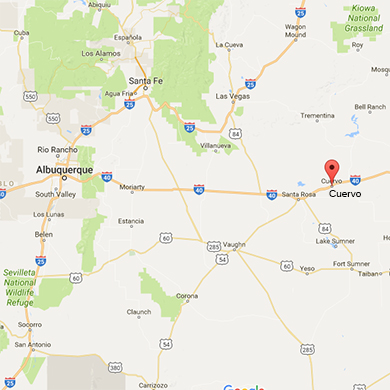 but because it’s literally feet from Interstate 40. Clearly, most people on the road between Albuquerque and Tucumcari don’t stop for a visit. Either they don’t know about Cuervo or they don’t care. That’s fine with me, although it doesn’t quite keep all the riff-raff out.
but because it’s literally feet from Interstate 40. Clearly, most people on the road between Albuquerque and Tucumcari don’t stop for a visit. Either they don’t know about Cuervo or they don’t care. That’s fine with me, although it doesn’t quite keep all the riff-raff out.
Pulling into desolate, (mostly) deserted Cuervo is like driving into the apocalypse, if the apocalypse happened in 1920. Just forget about the semis whizzing by on I-40 and there are only old cars and older houses, scraps of clothes and newspapers from decades ago, everything in that hauntingly arrested state that all aficionados of the lost desire.
It’s always useful to know the names of places, regardless of the language they’re in, and that’s true in Cuervo. The town’s name means “crow,” (or, alternatively, “raven”) and while there may have been many of these dark birds around at one point, not a single one was seen on my visit. Perhaps they were hanging out on nearby Cuervo Hill, the town’s namesake. Or, maybe, unlike me, they were simply smart enough to stay out of the relentless heat of the midday sun.
Like so many others in New Mexico, Cuervo was a railroad town, brought to life about 1902 when the Chicago, Rock Island, and Pacific Railroad came through and turned the little outpost into a water stop. Before that, the town site had been on a trade route in use since at least the early 1500’s, but no one had previously thought to try to settle down way out on the wide and lonely plains.
Cuervo started off with a bang as an expansion of cattle and sheep ranching swept through the area in 1910. A couple decades later, Route 66 ran straight through town, 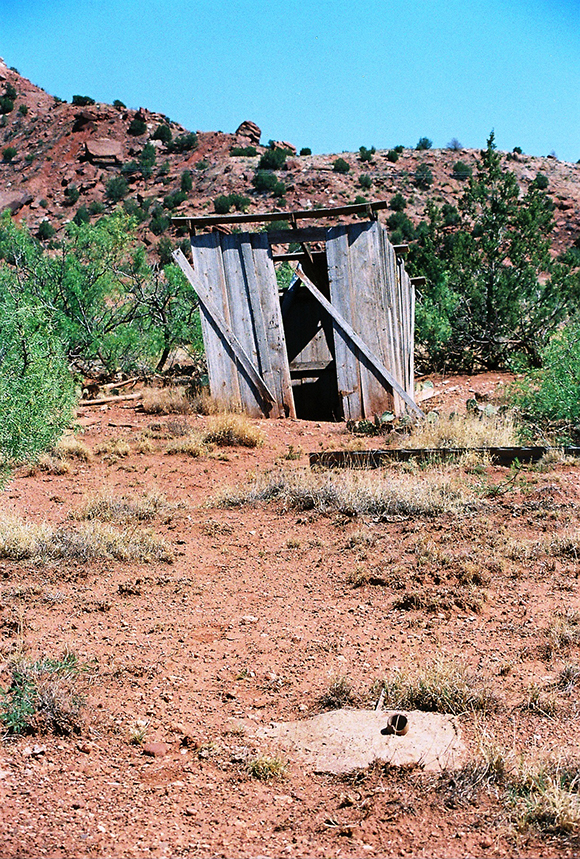 easily supporting the few gas stations and hotels that sprang up in its wake. At its height, Cuervo had two of everything a person could want: schools, churches, doctors, and hotels.
easily supporting the few gas stations and hotels that sprang up in its wake. At its height, Cuervo had two of everything a person could want: schools, churches, doctors, and hotels.
One school, built around 1930 and closed in 1958, stands alone in a field of red dirt and was the high point of my first visit to Cuervo. Shortly afterward it might’ve been purchased by an elderly lady for $10,250, though I’m not sure if that sale actually went through. Whatever the case, it has since been spruced up. That’s the old outhouse and classroom in the accompanying photos. Also, both churches are extant. The Catholic church on the south side of I-40 was built of red sandstone during WWI. It’s well-maintained to this day. The Getty Memorial Baptist Church, also made of stone but on the north side, was originally a barn, I believe.
As with dozens of towns that owed their existence to the railroad and Route 66, the construction of the interstate system was a death knell. In the case of Cuervo, in the late 1960’s, I-40 was put right through the center of town, probably turning the lives of many residents into something like a John Mellencamp song. Yet it’s worth bearing in mind that Cuervo was never a metropolis. Its population in 1946, immediately post-WWII, was only 128. In 1981, Philip Varney reported in New Mexico’s Best Ghost Towns that many homes remained occupied.
Cuervo’s population may now be in the single digits, including the owner of the semi-functioning gas station on the north side of I-40. If you came to take pictures, I hear he probably won’t be happy to see you. However, I have no firsthand experience. Hey, I’m okay with that. Another resident of Cuervo told me that he has no problem with visitors. Thus, I make no recommendations either way. However, I will say that I hope Cuervo doesn’t change too much. Sometimes a place that time forgot is worth keeping that way.
Philip Varney’s New Mexico’s Best Ghost Towns: A Practical Guide was my primary source for this piece. I also got a few tidbits from Ghost Towns Alive by Linda G. Harris. Finally, a little more background was plucked from Legends of America.
John Mulhouse moved to Albuquerque in 2009 after spending the previous decade in Minnesota, Georgia, Tennessee, and California. He loves the desert, realizes it doesn’t care too much about him, and thinks that’s all as it should be. More of his documentation of the lost, abandoned, beaten, and beautiful can be found at the City of Dust blog and the City of Dust Facebook page.



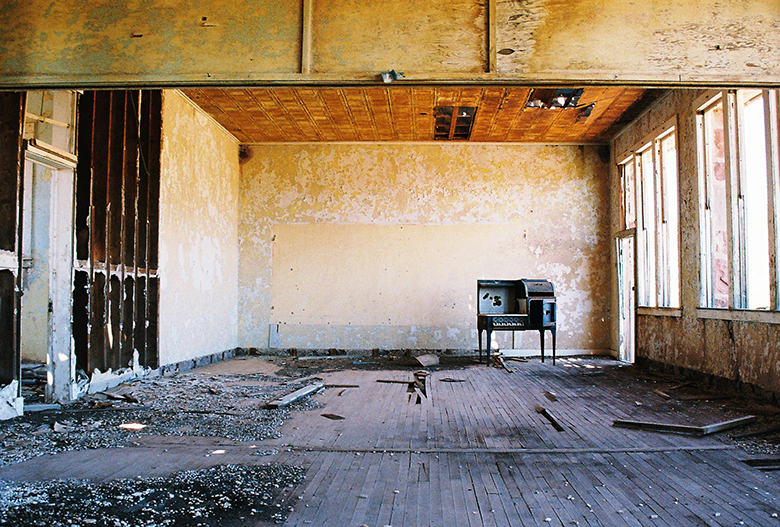
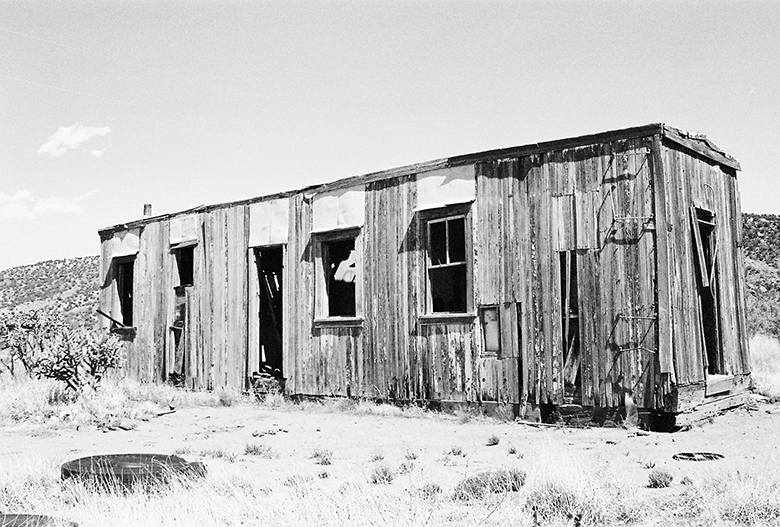
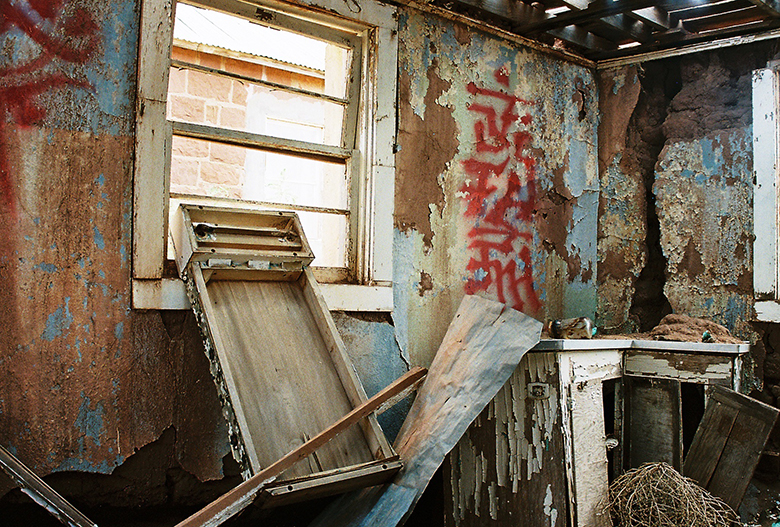
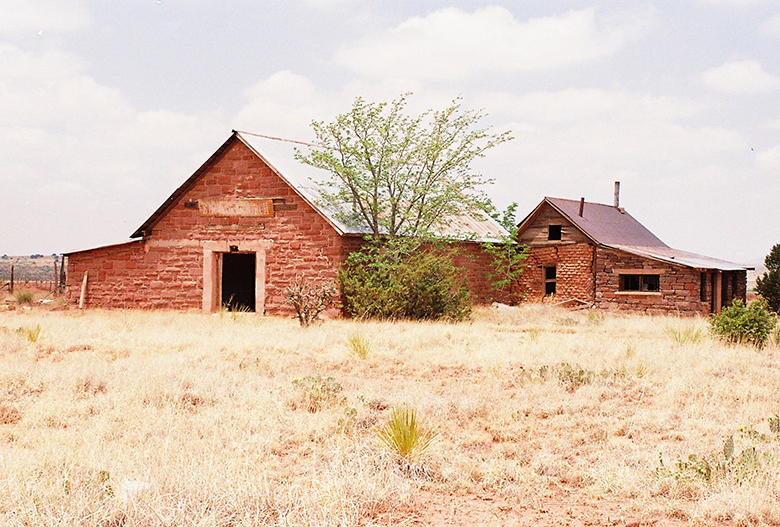
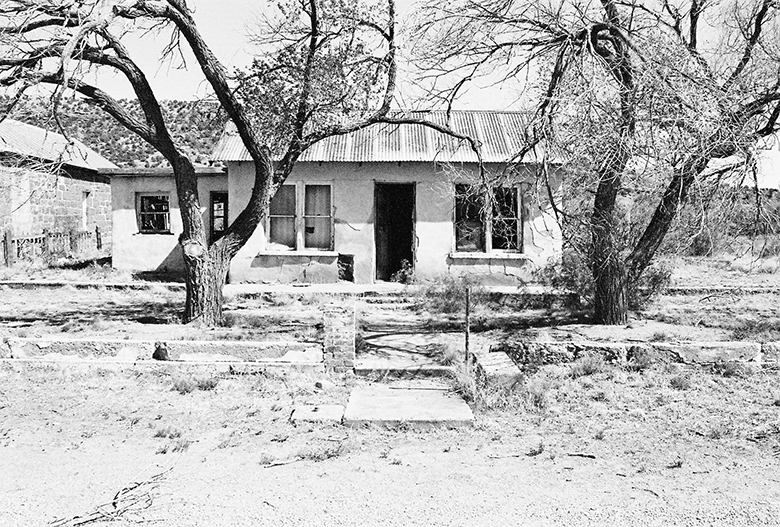
It appears that new metal roofs have been put on some of the buildings. …..has someone purchased it?